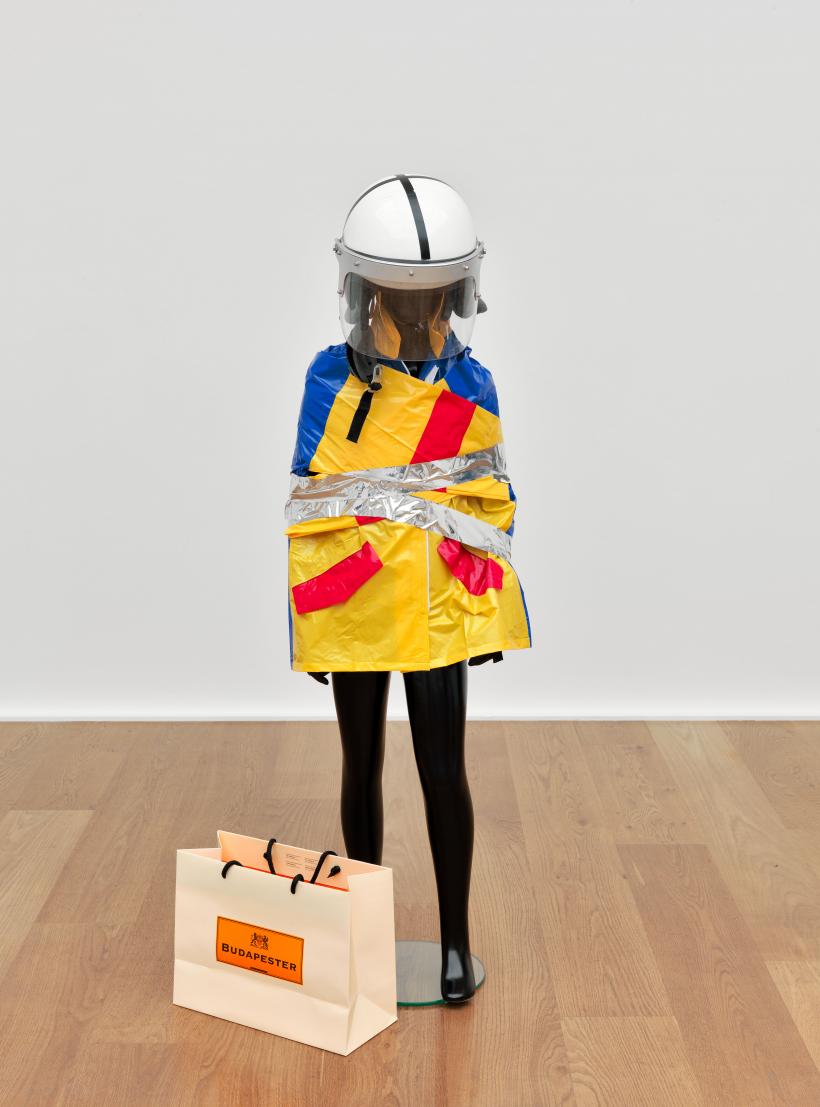Isa Genzken, Botanical Garden, Inverleith House, Royal Botanic Garden, Edinburgh, 19 July – 28 September 2014
Originally published at This is Tomorrow, 11 September 2014
Isa Genzken: Botanical Garden, Installation view, Inverleith House, Royal Botanic Garden, Edinburgh (2014) © Isa Genzken. Courtesy of Hauser & Wirth and Galerie Buchholz Cologne/Berlin. Photograph: Michael Wolchover
For its summer season Edinburgh Festival exhibition Inverleith House, set within the city’s Royal Botanic Garden, presents a showcase of photographic collages and sculptural assemblages by the German artist Isa Genzken. A serene, distinguished and discreet building given over to Genzken’s sublime disorderly superabundance. Its minimalist and refined architecture amplifying her overloaded, skilfully unskilled aesthetic projects. A brilliant tension exists between the installation’s location, the substances and complexity of these works, which consist of masses of incongruent material, and the constant changeability of their meaning. A language of abrasiveness is apparent, filled with humour, spontaneity and poignancy, it is nevertheless reluctant to define, qualify or justify itself.
The House’s galleries host works consisting of Mickey Mouse toys, car parts, Mike Kelly obituaries, Donald Duck paintings, silver tape, cling film, spray paint, mirrored surfaces, wooden crates that mimic modernist architecture (New York’s New Museum in particular). Photographs of red roses, fake plants, newspaper clippings of riots alongside real riot gear, 15th century Flemish masterpieces adjoining shots of Michael Jackson and Diana Ross in performance, a close-up portrait of Joseph Beuys and Werner Herzog in different acting and filmmaking roles seen through mirrors and yellow plastic. Alien masks, snakeskin jogging pants and bags from expensive boutiques punctuated throughout with Polaroid and photo booth portraits of Genzken herself. Portraits from across her lifetime, she is 68 now, a witness to post-Second World War Western culture and its people in upheaval, conflict, crisis and economic turmoil.
The entrance gallery is populated by a series of characters – decorated showroom mannequins weighed down by debris, toys, gas masks, cheap bad fashions all sheathed in metres of plastic wrap, belts and dripping paints. A second room houses architectural models for impossible skyscrapers: scale, functionality and material in unhinged and off-centre instability. A single large-scale photographic collage, an Untitled work from 2012, occupies an upstairs gallery. Stretching across the floor and set under sheets of glass it presents an unfolding explorative narrative across promo shots of David Bowie (from his Berlin period, Low and Heroes), a kid in a Ramones baseball cap, red flowers and images of gardens, lightning flashes, a telephone conversation between the artist and a man called Bill, frogs and renaissance paintings of combat and angels. It is an impressive photographic event. A description of Genzken’s tactic of adaptation, appropriation and recycling of everything – even herself – placing images together, juxtaposing materials and erasing, with multi-coloured spray paints, the unnecessary. It is a process of her mind at work, hyper aware and visually effervescent.
A final character appears: a child mannequin bound up in silver tape in a red, yellow and blue plastic coat with a riot helmet on guarding an empty shopping bag. She exists in a perilous condition – between security with the potential for rage and revolution. All the while a central motif returns, something that appears repeatedly in the show. Evidence from nature, wild patterns and organic materials: gardens, flowers, red roses, trees, and calm seas, unchained from the affairs of the artificial.
